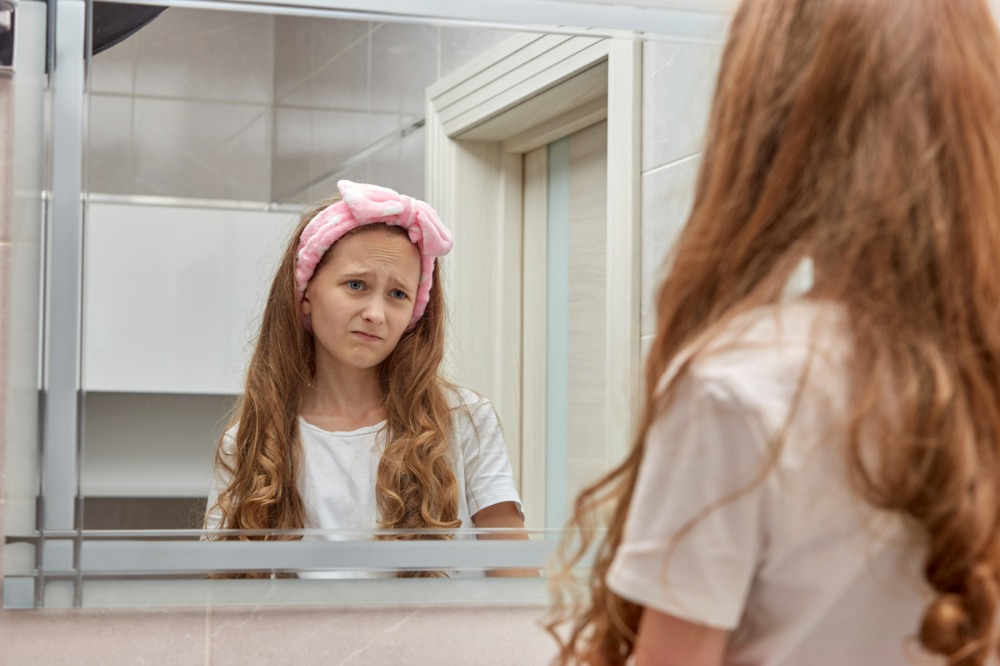
In our image obsessed society, the pressures on young people to “look good” are almost omnipresent, and this is having serious implications for how they think and feel about their body image.
Whether it’s in magazines, on billboards or television, young people are being bombarded with narrow, stereotypical appearance and beauty ideals that are taking a massive toll on their mental health.
However, before society can address this issue, those who are in a position to intervene early and prevent it from snowballing – namely parents and teachers – have a responsibility to understand body image and its many positive – and negative – effects on young people.
The National Eating Disorders Collaboration (NEDC) defines body image as a “combination of the thoughts and feelings that we have about our bodies”, and these can be influenced by internal (e.g. personality) and external (e.g. social environment) factors.
According to the NEDC, body image has four aspects:
- The way you see your body is your perceptual body image. This is not always a correct representation of how you actually look.
- The way you feel about your body is your affective body image. Feelings may include happiness or disgust, but are often summarised as the amount of satisfaction or dissatisfaction you feel about your shape, weight and individual body parts.
- The way you think about your body is your cognitive body image. This can lead to preoccupation with body shape and weight.
- The behaviours you engage in as a result of your body image are your behavioural body image. When a person is dissatisfied with the way they look, they may isolate themselves or employ unhealthy behaviours as a means to change appearance.
Be a positive role model
Research has shown that having a role model who is older and of the same gender can both inspire and empower young people, and this is certainly true when it comes to the issue of body image.
Christie Jenkins is an Australian trampoline athlete who has competed at both Australian national and international level.
Jenkins is also a speaker and consultant who has built herself a reputation as an inspirational role model for young women. She sometimes works with schools in Victoria where she mentors senior students from both genders about her journey and educates them about the transferable skills that sport can provide.
“A healthy body, and a healthy body image is a big issue for young women especially,” Jenkins told The Educator, adding that the confidence that achieving in a sport can bring teenage girls can have a profound impact on their attitudes in this area.
“It’s so important for girls to be proud not just of what their body looks like, but of what it can do”.
Introduce students to diversity
Another helpful practice is for teachers to introduce young people to a wide range of images that reflect diverse physical abilities, body sizes and outward appearances. This can be done through various reading materials, informational posters and homework tasks.
Regardless of you choose to do this, remind young people that bodies come naturally in all sizes, weights, shapes and colours and that all bodies are to be respected.
One issue that has been on the rise in recent years is the lack of sufficient education about young people with intersex variations.
There are more than 40 known intersex variations and may apply to up to one in 60 individuals which is effectively as common as someone being born with red hair, making it much more common than people might think.
Yet, most schools fail to engage mindfully with contemporary content about intersex variations – a reality that one University of Southern Queensland (USQ) academic says must change.
Dr Annette Brömdal from USQ’s School of Education, said it is important for principals to ensure students with intersex variations and their families are supported by access to affirmative and knowledgeable forms of school support.
“This includes respect for the students’ privacy and confidentiality, and providing assistance for them to be self-determining,” Dr Brömdal told The Educator.
“Principals must also provide mechanisms for feeding back to school policy, connected to one another including ongoing affirmative peer and other psychosocial support”.
Dr Brömdal also pointed to the importance of instituting intersex awareness raising for families and school boards/governing bodies.
“School staff should be able to refer parents or guardians of students with intersex variations to intersex affirming resources and support or direct them to staff who can assist with this”.
Celebrate their non-physical attributes and talents
Research has shown that teaching young people to think positively about themselves can help develop a positive self-image that doesn't focus entirely on appearance.
Ana Reisdorf, registered dietician and writer for Walgreens, says parents and schools should encourage young people to practice stating what positive attributes they have and what they are capable of doing or becoming.
“What are some things that your children like about their bodies? Do they like their smile, or how their body helps them climb up a tree? Don't forget your children's non-physical attributes — are they kind, funny, smart or talented at something?” Reisdorf wrote in an article published on Mental Health America.
“A regular practice of saying affirmations can reduce negative self-talk and build your children's confidence”.
Reisdorf concludes: “Teaching your children body positivity and healthy habits around food and physical activity can have a lasting impact on their self-esteem, self-perception and how they interact with an image-driven culture”.


